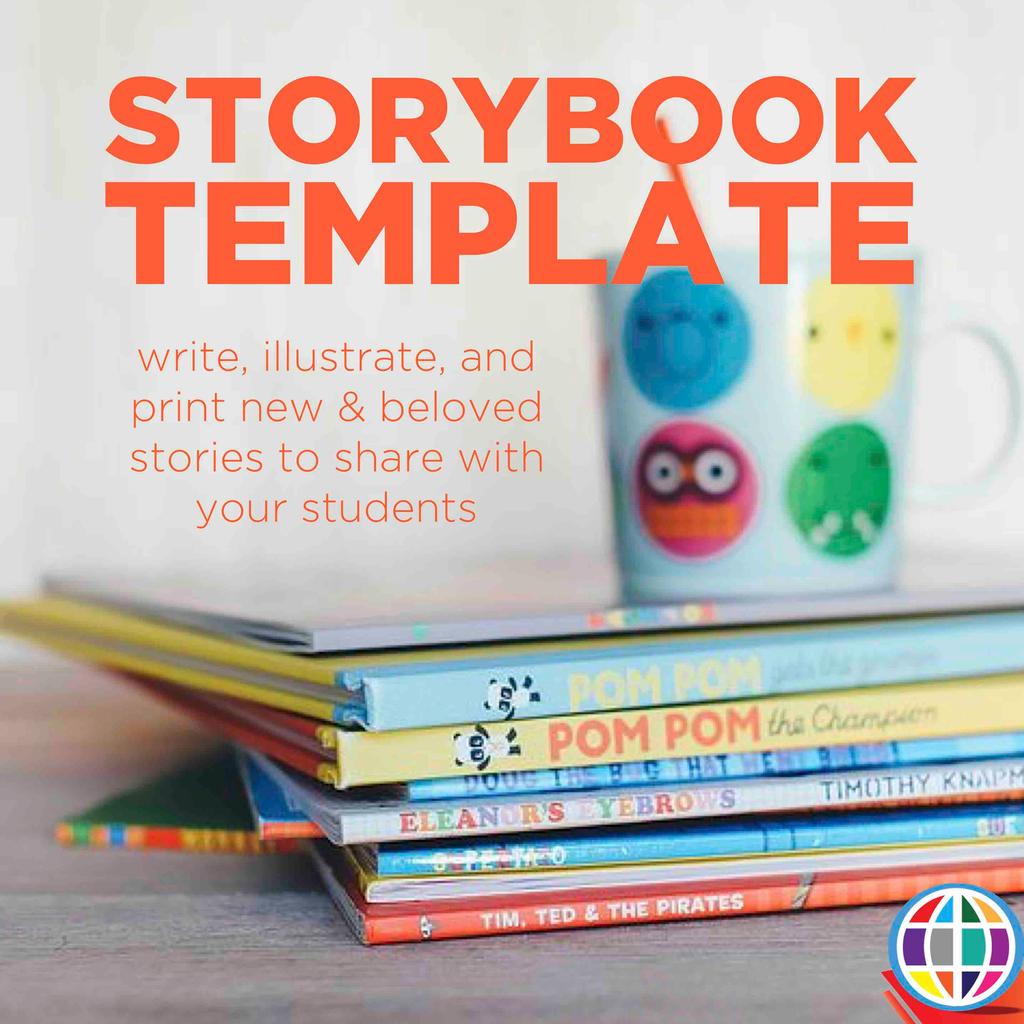After every class story that we tell (well, at least every story that isn't totally lame), I like to have the class make a storybook to add into the class library. They are great to have when students stop in with friends or come in for conferences with their parents.

I made 10, 14, and 18 page templates for Google Slides that are sufficient for any story I've asked in class, and I am giving them to you for FREE!
All templates are licensed CC BY 4.0, so you are welcome to use them for any purposes that you choose (yes, even to create things that you sell!) provided you do not remove the original credit line.
[googleapps domain="docs" dir="presentation/d/e/2PACX-1vTOtK7YwxKwh5pxbgDL0aMSWpFnriePDy43Ql-PAaB0vDSTR37oUNIXwlBK_wVaWOi-4fJiI5cdnMPf/embed" query="start=false&loop=false&delayms=3000" width="1365" height="1053" /]
How to make the storybook
After you’ve finished asking a story, divide the script into “chunks” so that you have text for a storybook. Divide your students into the same number of groups as you have pages (13 pages = 13 groups). In my classes, this means either two or three students per group, depending on the size of the class…you may have one or two students per “group”. They do not need to be even.
Prepare to illustrate
Give each student a 4.25″ square piece of computer paper. Have them write their names on one side.
Assign one chunk of the script to each student by saying the group members’ names and then reciting the portion of the story, in the target language, that you want them to illustrate for their page. For example: “Lohali, Jason, Paea, Seth -- Uds. van a ilustrar esta escena: “....(describe the scene)...”. Require all students in the class to listen as you assign sentences to different groups, asking them questions and circling in the target language as you go (ex: Do Bob and Jill draw “Sarah wants to read a book” or does Billy draw “Sarah wants to read a book”?). That way, you get more repetitions of the target structures. **TRULY, THIS IS THE MOST VALUABLE PART OF THIS ACTIVITY -- MORE INPUT!** Students may choose to write their assigned portion of the story on the back side of the paper (the one with their name on it) or on a scrap piece of paper so that they don’t forget what they’re supposed to draw.
Illustrate!
After you’ve assigned a scene to all groups, allow students to begin illustrating their scene on the piece of paper; on the side on which they did NOT write their name. There can be dialogue (in the target language) on the page, but the actual text that they were assigned needs to be written on the BACK, if it is written at all. Illustrations should be in color, if possible!
IF POSSIBLE: As students finish their illustrations, show them on a Doc cam and ask students if they can tell you what is happening in that picture, and if it happened at the beginning, middle, or end of the story.
Remind students to make quality illustrations so that theirs will be selected for the class storybook! Also, the illustration should fill the space on the square of paper.
Assemble the book
- After class, type the story into one of the templates available here.
- Optional: take pictures of all of the students’ illustrations and insert the images into the corresponding pages of the storybook.
- Save the completed template as a PDF.
- Open the PDF and rotate all even numbered pages 180 degrees so that they are upside down.
- Print out the storybook. If possible, print 1-2 sided. If not, you will need to copy the print-out 1-2 sided so that it reads properly.
- If you did not insert photographs of the illustrations into the slideshow....Glue the pictures into the storybook (or have a student do this!!). Unless I have a huge number of absences, I have at least two illustrations per chunk, so I make two storybooks for each story. **It is very important that you try to include any illustration that was drawn with effort. Some kids don’t try to make them look nice, so I don’t feel bad about not including them. You can put multiple illustrations on one page, even if it means cutting them out and using the best components from each one. You can also put illustrations on the front and back cover.
- Laminate it and put it in your class library. You can read it to your class the next day or wait awhile and remind them of how awesome and creative they are!
Here is an example of a completed storybook that I scanned into the computer (it's not a very good scan nor is it in color, but hopefully you get the idea): El lobo hambriento class storybook. Please excuse the errors that it contains; there are a few misspellings and missing words; there were a few typos that I only caught after assembling the book.
Find more activities
Looking for more activities to do after asking stories with your classes?
Check out this list or visit my Story Activities board on Pinterest!





